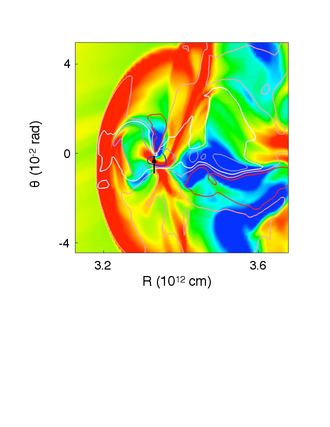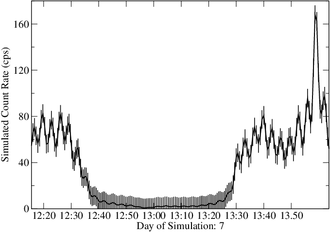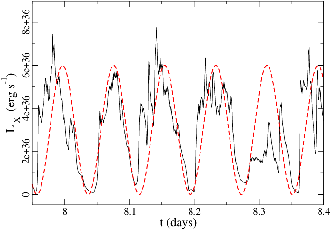
Vela X-1 demonstrates high X-ray variability and off-sates revealed by INTEGRAL. Hydrodynamic simulations (using VH1) allowed Antonios Manousakis of the Copernicus Astronomical Center im Warsaw and his collaborator R. Walter of Observatoire de Geneve to discover the likely origin such variations, occurring on time scales of hours. Results are published in a paper: "Origin of the X-ray off-states in Vela X-1". These oscillations of the mass accretion rate (with a typical period of ∼ 6800 sec) corresponds to the complex motion of a bow shock forming between the neutron star and the massive companion, moving either towards or away from the neutron star.
Figure above: Hydrodynamic patterns induced by the gravitation of the neutron star on the stellar wind of the massive companion. A snapshot of the density. The companion star is on the left. The image side is about 5x10^12 cm. The bow shock (in red) creates the low density bubbles (in blue) that are quenching accretion on the neutron star (arrow).

Fig2: Portion of the simulated light curve with 20 sec time bins. The average luminosity of 4 × 10^36 erg s^−1 corresponds to ∼ 70 cps.

Fig3: Section of the simulated light curves of Vela X-1 together with a sine wave with a period of 6820 sec (red dashed line).






